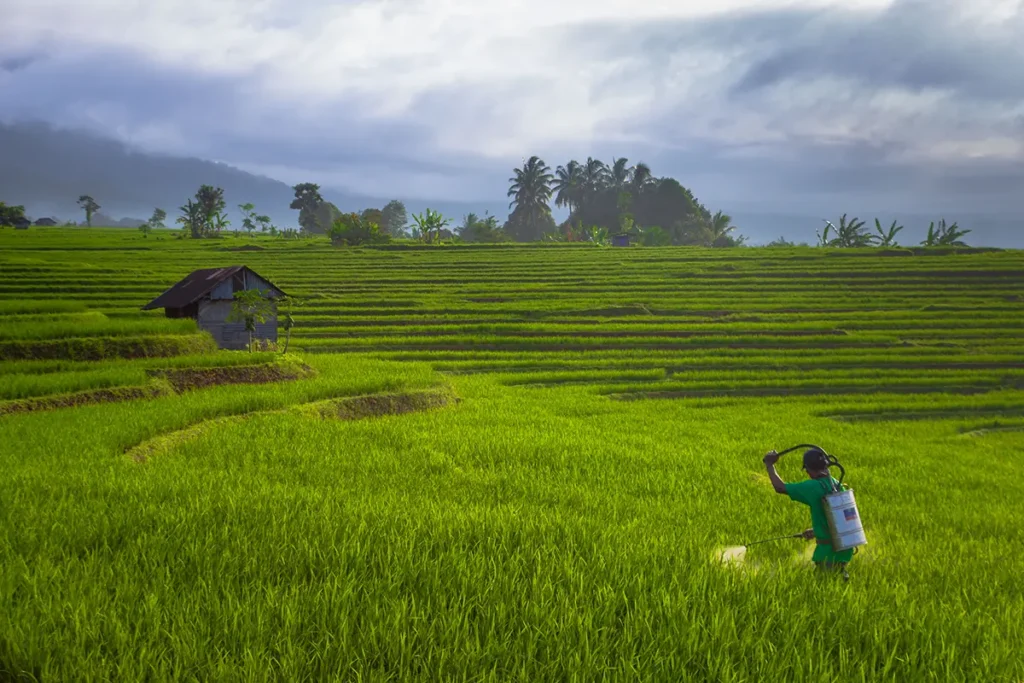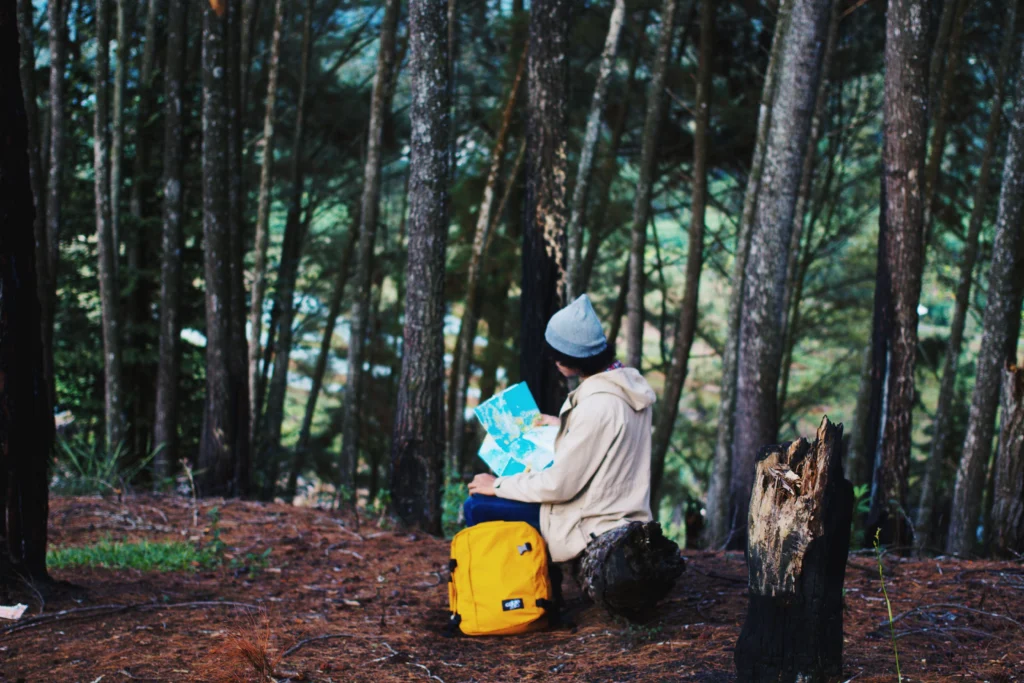Discovering the best time to visit Yogyakarta is essential for travelers looking to immerse themselves in the city’s rich cultural heritage and awe-inspiring natural beauty. This Javanese gem, celebrated for its historical significance and vibrant traditions, rewards visitors with a wealth of experiences year-round. However, to truly embrace the essence of Yogyakarta’s soul, planning your journey during the ideal season for Yogyakarta travel can significantly enhance your adventure.
With an eye on the sublime, one must wonder, when to go to Yogyakarta to experience its grandeur without the interference of the elements? The dry season, stretching from April to October, promises the most agreeable climate for exploration. Whether it is to stroll through the ancient corridors of historic temples or to engage with the bustling street life, this period offers optimal weather conditions and is highlighted in every Yogyakarta travel guide. Yet, the city’s allure is not bound by time, as it generously unfolds its splendor to those venturing during off-peak months as well.
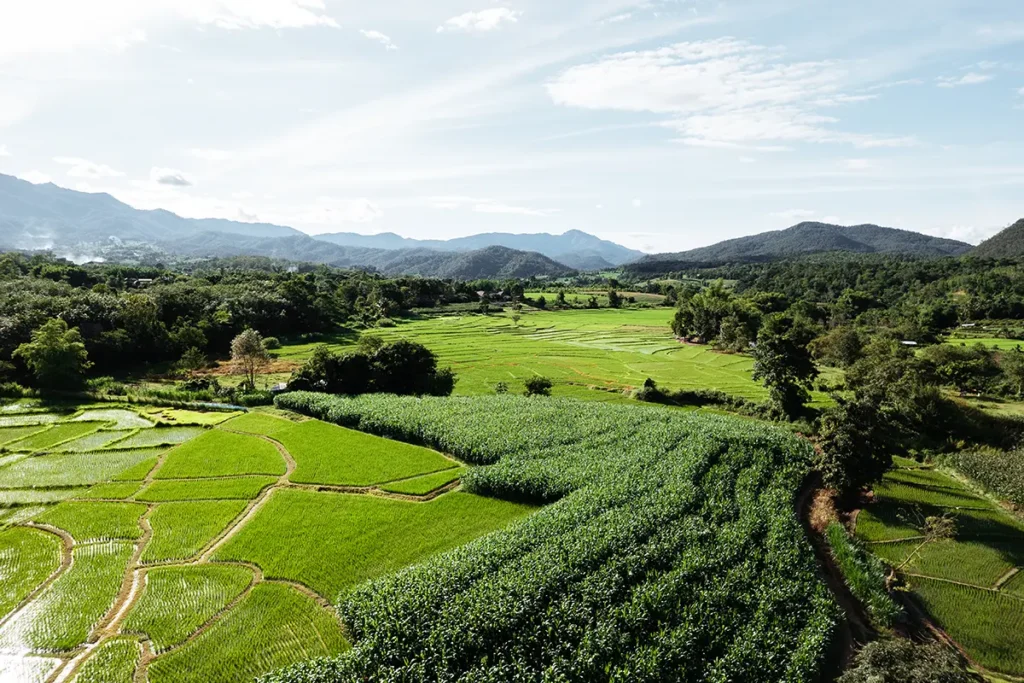
Key Takeaways
- The dry season from April to October is the best time to visit Yogyakarta for favorable weather and outdoor activities.
- Yogyakarta’s climate remains warm throughout the year, accommodating to travelers indifferent to the season.
- Visiting outside the dry season offers an opportunity to experience the cultural heart of Java with fewer tourists.
- When planning a trip, one must consider both the Yogyakarta climate and regional cultural events for a comprehensive experience.
- The ideal season for Yogyakarta travel enhances the opportunity to witness the city’s natural and historical attractions in comfort.
- Insights from a detailed Yogyakarta travel guide help visitors navigate their trip, aligning activities with the perfect season.
Introduction to Yogyakarta’s Tropical Climate
Experiencing Yogyakarta weather is to immerse oneself in a quintessential tropical climate experience. On the island of Java, Yogyakarta’s position close to the equator means that it is graced with enduring warmth. To make the most of your adventure in this Indonesian treasure, a little knowledge about the Yogyakarta climate can go a long way. Here, the temperatures are consistently high throughout the year, providing a welcoming embrace of heat that travelers from cooler climes may find both novel and invigorating.
Yogyakarta travel tips always stress the importance of staying hydrated and protected from the sun. Visitors should be prepared for the elevated levels of humidity that define the city’s weather, necessitating light and breathable clothing. The climate oscillates primarily between dry and wet seasons, each bringing its unique characteristics and influencing the best times for various activities.
| Season | Characteristics | Travel Recommendations |
|---|---|---|
| Dry Season | Lower humidity, minimal rainfall | Outdoor explorations, Temple visits |
| Wet Season | Higher humidity, frequent rainfall | Cultural tours, Indoor attractions |
While Yogyakarta is a destination with year-round appeal, travelers fare best when they plan in alignment with its specific meteorological patterns. No matter when you decide to visit, Yogyakarta’s warmth extends beyond its climate—its people, culture, and atmosphere make any season a good time to experience this vibrant city.
Best Time to Visit Yogyakarta
Identifying the best season to visit Yogyakarta hinges on several factors, including the optimal weather conditions for travel, the vibrant Javanese culture showcased during festivities in Yogyakarta, and the varying travel costs in Yogyakarta. Each element plays a crucial role in defining an enjoyable travel experience to this historic and culturally rich region in Indonesia.
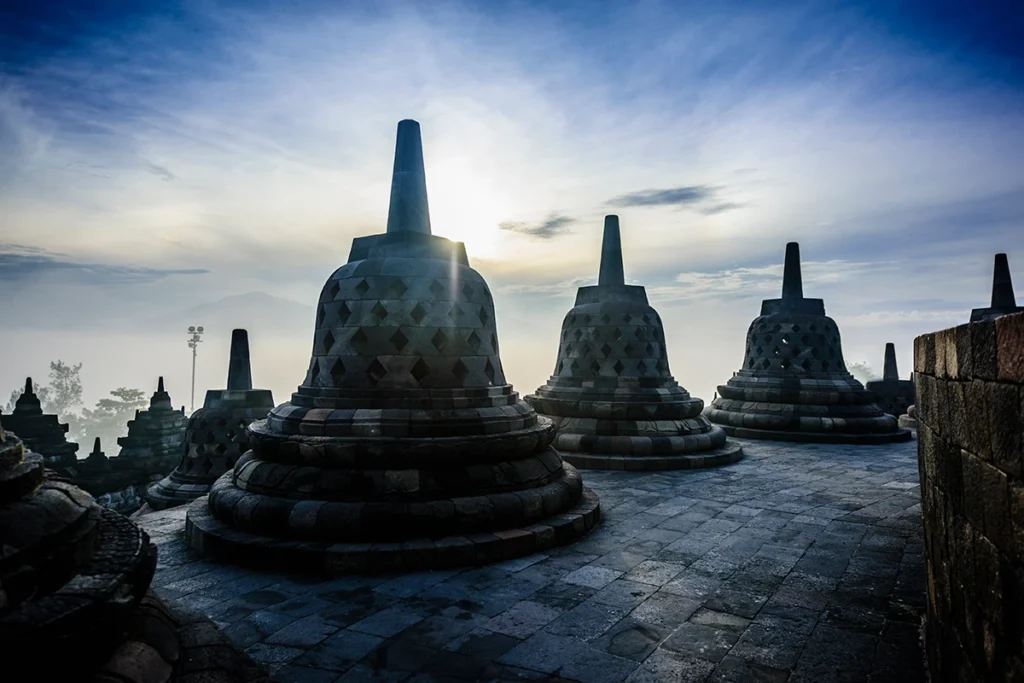
Optimal Weather Conditions
For travelers seeking the best months for good weather in Yogyakarta, July through September stand out as the premier choices. During these months, the city enjoys a reprieve from the usual rain, opening up a plethora of opportunities for tourists to explore the esteemed Yogyakarta attractions and partake in various things to do in Yogyakarta.
Cultural Events and Festivities
Yogyakarta is not just about its agreeable climate, but also about its rich calendar of cultural events and festivities that ignite the city throughout the year. Planning a visit around these events allows travelers to immerse themselves deeply in the heart of Javanese culture, thus enhancing the essence of their visit. Vivid examples of such richness include the annual Ramayana Ballet and the vibrant Sekaten Fair.
Travel Costs During Different Seasons
When considering the travel costs in Yogyakarta, it is wise to note the fluctuations based on the Yogyakarta tourist seasons. The table below outlines the expected best season to visit Yogyakarta while taking budget and tourist traffic into consideration, thereby aiding travelers in strategizing how to save money on travel.
| Month | Hotel Rates | Tourist Traffic |
|---|---|---|
| April | High | Moderate |
| July – September | Medium | High |
| November | Low | Low |
Yogyakarta Weather Overview
Renowned for its rich culture and historical landmarks, Yogyakarta is a treasured destination for travelers. Understanding the annual weather in Yogyakarta is crucial for planning a gratifying journey. The city basks in a warm tropical climate with temperatures that hover around 86°F, making any time a great time to visit. However, an appreciation of the region’s distinct climate and weather patterns can enhance travel experiences.
Yogyakarta’s rainfall distribution is an important aspect, with precipitation in Yogyakarta peaking during the transitional period between the wet and dry seasons, typically in January to April and again in November. To aid travelers in their planning, the following yearly overview outlines what one can expect from the climate in this cultural hub of Java.
- Dry Season – Extended periods of sunshine, ideal for outdoor exploration.
- Wet Season – Higher humidity and rainfall, with sporadic downpours, lush landscapes, and fewer tourists.
- Daily Average Sunshine – Even during wetter months, Yogyakarta generally enjoys a significant amount of sunshine, contributing to its popularity as a year-round destination.
Despite occasional rains, the daily average sunshine in Yogyakarta ensures that its ancient temples, bustling markets, and scenic landscapes can be enjoyed nearly any day of the year. Whether it’s marveling at the architectural splendor of the Borobudur Temple or strolling through the vibrant streets of the city, the weather in Yogyakarta rarely dampens the spirit of adventure.
Dry and Rainy Seasons in Yogyakarta
Visiting Yogyakarta presents a diverse array of experiences depending on the timing of your visit, with the region’s monsoon patterns dictating the dry and rainy seasons. Understanding these seasonal variations is key to crafting a fulfilling Yogyakarta travel guide and ensuring a memorable journey through this vibrant city.
Understanding Monsoon Patterns
The monsoon patterns in Yogyakarta are split into two distinct seasons, affecting everything from the must-visit places in Yogyakarta to the activities you can enjoy. The dry season spans from April to October, providing ample time to soak in the local culture and landscape with minimal rainfall. Travelers can explore ancient sites like the Borobudur and Prambanan temples under clear skies, making the most of their Yogyakarta itinerary.
Navigating Yogyakarta During The Rainy Season
The rainy season, which extends from November to March, showcases a different facet of Yogyakarta, with frequent showers transforming the landscape. Heavier rains characterize the monsoon season, yet savvy travelers equipped with rainy season travel tips can still experience the city thoroughly. While navigating monsoons, flexibility in scheduling allows adventurers to discover what to do in Yogyakarta during rain, such as indulging in indoor cultural experiences or savoring local cuisine at atmospheric cafes.
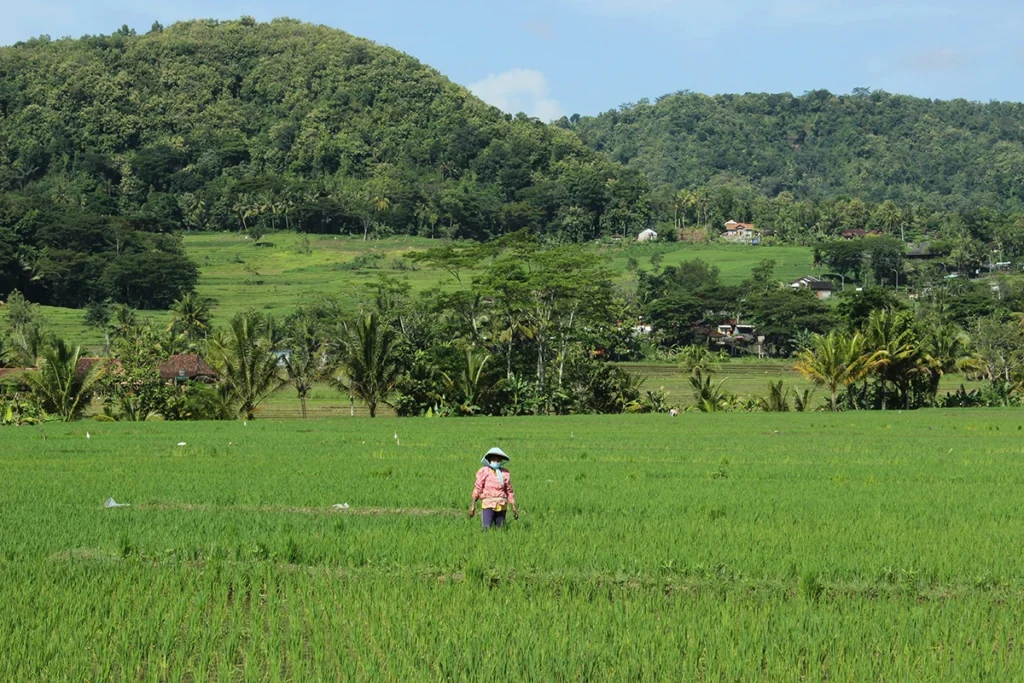
Month-By-Month Breakdown for Yogyakarta
Planning a visit to Yogyakarta involves considering its monthly weather patterns to ensure a delightful journey. With Yogyakarta weather by month being a critical element of travel planning for Yogyakarta, it is important to align your expectations for travel with the climatic nuances of each month.
Highlighting the Best Months for Travel
The best time to visit Yogyakarta is usually from July to September. This stretch is the city’s peak period for travel, thanks to its amiable climate, enhancing the allure of Yogyakarta tourist spots. Travelers can anticipate days with less rain and humidity, making it ideal for exploring the rich heritage and natural landscapes of the region.
What to Expect Each Month
With important travel information in mind, here’s a concise look at Yogyakarta monthly weather and what travelers can expect:
| Month | Weather Conditions | Travel Recommendation |
|---|---|---|
| January – March | High rainfall, warm temperatures | Good for cultural experiences, be prepared for rain |
| April – June | Decreasing rainfall, pleasant warmth | Ideal for sightseeing and temple visits |
| July – September | Low humidity, minimal rain | Optimal for outdoor activities and exploration |
| October | Mild weather with increasing rain | Still favorable for travel before the rainy season |
| November – December | Wet season begins, cooler temperatures | More indoor activities recommended, experience the off-peak calm |
The diverse climate of Yogyakarta presents opportunities and challenges throughout the year, but with careful planning, the city can offer a rich array of experiences in any month. Whether seeking adventure, culture, or a blend of both, the detailed breakdown above can guide travelers in creating an itinerary that capitalizes on Yogyakarta’s unique charms.
Yogyakarta’s High and Off-Peak Tourist Seasons
For travelers planning to visit the culturally rich city of Yogyakarta, understanding the ebb and flow of tourist seasons in Yogyakarta is crucial. The periods of high and off-peak travel significantly influence not only the travel experience but also the aspects of accommodation and overall costs.
The peak visitor numbers in Yogyakarta are typically seen in July, August, and the festive month of December. These months coincide with school holidays and festive seasons, explaining the surge in tourist activity, particularly in August. An influx of visitors around these times means that popular sites are bustling, and the vibrancy of Yogyakarta is on full display.
In contrast, the months of January, February, March, and November are characterized by lower tourist traffic. These periods are considered the best time to visit Yogyakarta for those who seek a quieter experience. During these off-peak times, travelers often enjoy a more relaxed pace, easier access to attractions, and potentially lower costs in accommodation and activities.
| Month | Season Type | Visitor Numbers | Travel Experience |
|---|---|---|---|
| January – February – March | Off-peak | Lower | Tranquil, cost-efficient |
| July – August | High | Peak | Lively, culturally vibrant |
| November | Off-peak | Lower | Calm, budget-friendly |
| December | High | Peak | Festive, family-oriented |
When planning a trip to the Javanese hub of tradition, one must take into account both the weather trends and the expected visitor counts to align with personal travel preferences. The delicate balance of choosing the best time to visit Yogyakarta hinges on whether one desires the challenge of navigating through the high season buzz or the peace of exploring during the off-peak calm.
Annual Cultural Events and Festivals
When it comes to experiencing Javanese culture, the Yogyakarta cultural events stand as a majestic testament to the region’s profound cultural significance. Among these, the colorful and vibrant festivals in Yogyakarta provide a window into a realm where ancient traditions and modern celebrations converge, creating a unique Yogyakarta travel experience for locals and visitors alike.
Festivals Worth Planning Your Trip Around
For those looking to enrich their journey with the area’s rich heritage, timing your visit to coincide with traditional Javanese festivals is a must. From the spellbinding performances of the Ramayana Ballet at the Prambanan Temple to the soulful Sekaten Festival which commemorates the birth of Prophet Muhammad, each event offers a glimpse of Yogyakarta traditions in their full splendor.

Visiting during such events not only allows for witnessing the grandeur of local arts but also facilitates participation in a shared communal experience, where one can bond with the Javanese people over their shared love for art, music, and history.
Experiencing Traditional Javanese Culture
In the heart of the city, the royal palace, or Kraton, is more than an architectural wonder; it is an active hub of Yogyakarta traditions such as classical dance, batik art, and the evocative sounds of gamelan music. As the epicenter of the region’s cultural life, the Kraton’s ongoing programs throughout the year add another compelling reason for cultural connoisseurs to visit this enchanting city.
Moreover, the bustling streets of Yogyakarta burst into life with street performances and art exhibitions, where the local arts in Yogyakarta are proudly displayed and celebrated, demonstrating a living culture that has evolved continuously whilst staying deeply rooted in its traditional values.
For those seeking to immerse themselves fully in the Javanese way of life, engaging in these festivities offers an unrivaled opportunity. One leaves with not just memories but a profound respect for a culture that thrives on its creativity and warmth.
Yogyakarta Travel Tips for All Seasons
When planning a trip to Yogyakarta, the vibrant heart of Java Island, every traveler should consider the local nuances to maximize their experience. Keeping abreast of the latest travel restrictions and health advisories is crucial; unexpected changes can impact plans significantly.
For those looking to navigate the financial aspects of their journey, currency exchange is most reliably managed through esteemed money changers or by using ATMs to withdraw the local Indonesian Rupiah. It’s advisable to compare rates and choose secure transaction points to ensure the best value for your money.

Accommodation is a key element in your Yogyakarta itinerary. For newcomers, staying in the vicinity of the energetic Jalan Malioboro presents an array of shopping and dining options. Its central location offers accessibility and a taste of Yogyakarta’s pulsating atmosphere. Conversely, those intent on delving into the region’s historical roots might prefer lodging closer to the iconic Borobudur or Prambanan temples, prioritizing ease of travel to these ancient wonders.
Here are some additional Yogyakarta travel tips:
- Street food is a must-try, but choose stalls that display high turnover for the freshest fare.
- Keep hydrated and apply sunblock generously, especially during the dry season.
- Respect local customs and dress modestly when visiting temples and cultural sites.
- Engage with local guides for in-depth stories and hidden gems off the beaten path.
Regardless of the season, your travels to Yogyakarta can be deeply enriching with a bit of foresight and preparation. Consider these pieces of Yogyakarta travel advice essential in creating a memorable and hassle-free adventure.
Major Yogyakarta Attractions and The Best Times to Visit Them
Yogyakarta, a city rich in culture and tradition, offers a myriad of breathtaking attractions that tell the stories of its ancient past. Among these, the Borobudur and Prambanan Temples stand as colossal testaments to Indonesia’s religious and artistic history. Likewise, Yogyakarta’s royal history is proudly displayed in its palatial complexes. Timing your visit appropriately not only enhances the experience but also affords you the comfort and splendor of these historic sites at their best.
Borobudur and Prambanan Temples
Renowned for their architectural grandeur and spiritual significance, the Borobudur Temple and Prambanan Temple are essential destinations for visitors exploring Yogyakarta’s historic attractions. The best times to visit these temples are during the dry months, where clear skies and a drop in humidity provide the perfect setting for exploration and photography. Evenings and early mornings are particularly magical, offering a serene atmosphere away from the daytime crowds.

Exploring Yogyakarta’s Royal History
Delving into Yogyakarta’s royal history requires a visit to the Yogyakarta Palace (Kraton) and the enchanting Taman Sari Water Castle. These sites are steeped in the sultanate’s legacy and are open for visitors year-round. Nonetheless, to fully appreciate the open courtyards and intricate detailing of the structures, the cooler months of the dry season provide a more agreeable climate, making the experience both comfortable and enjoyable.
As you wander through the royal dwellings and gardens, you’re not just walking through former residences, but through the living history of Yogyakarta. The tranquil beauty of Taman Sari’s hidden baths and the opulence of the Yogyakarta Palace’s throne room are amplified when the weather is at its most pleasant, allowing for extended visits without the hindrance of heat or rain.
In planning your itinerary, considering these best times to visit temples and royal sites ensures that your journey through Yogyakarta’s attractions is both comfortable and profoundly enriching.
How Yogyakarta’s Weather Affects Outdoor Activities
The tropical climate of Yogyakarta uniquely influences the outdoor activities that adventurers can partake in. Understanding Yogyakarta weather considerations is crucial for travelers looking to engage in active travel in Yogyakarta. When the skies are clear during the dry season, tourists flock to the majestic temples and lush landscapes for hiking and cycling. However, the monsoon season poses challenges and often reshapes the typical spectrum of accessible outdoor pursuits.
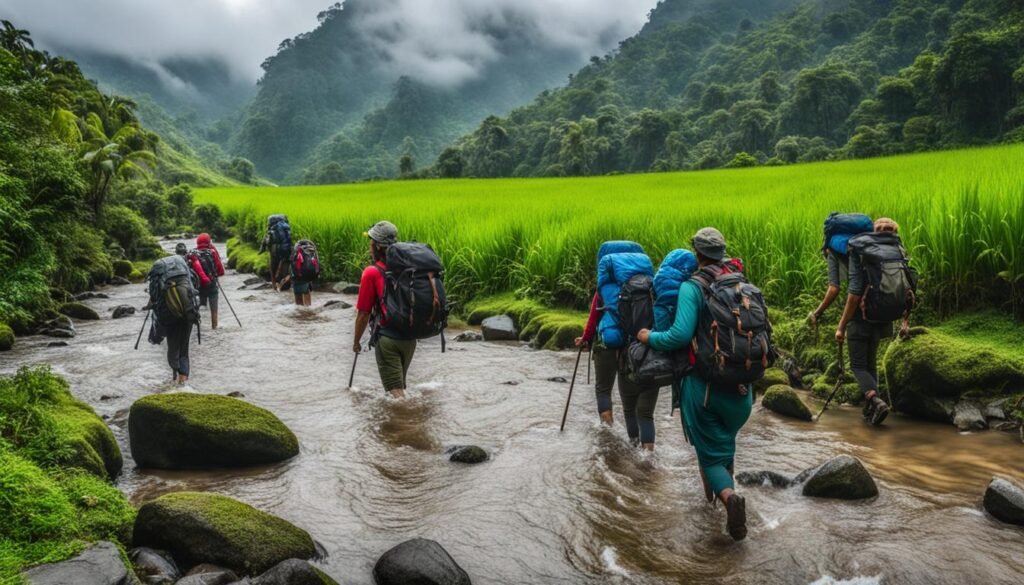
The following table showcases how various outdoor activities in Yogyakarta are impacted by seasonal weather changes, emphasizing the weather impact on activities.
| Activity | Dry Season | Rainy Season |
|---|---|---|
| Temple Exploration | Ideal for sunrise tours, unimpeded exploration | Possible afternoon showers, slippery pathways |
| Hiking | Excellent for long treks, clear paths | Increased risk of landslides, muddy conditions |
| Cycling | Comfortable, minimal disruptions | Wet roads, potential cancellations |
| River Rafting | Stable water levels, safer experience | High waters, thrilling yet potentially dangerous |
As evidenced, the seasonality of Yogyakarta’s weather has a substantial role in shaping the outdoor adventure landscape. By anticipating these weather-related nuances, travelers can optimize their itineraries for an unforgettable experience in Indonesia’s beautiful city of Yogyakarta.
Conclusion
When it comes to planning Yogyakarta travel, it is evident that the region’s allure remains constant throughout the year, but the ideal travel time for Yogyakarta hinges on what one seeks to experience. For travelers yearning for dry skies and pleasant climes, April to October serves as the prime window. Yet, those who prefer fewer crowds and potentially lower travel costs might find the tranquil ambiance of the off-peak months more appealing.
The Yogyakarta journey conclusion is not a one-size-fits-all, as each season paints the city in a different light. Whether you wish to bask in the festive fervor of cultural events or roam the serene streets during quieter times, Yogyakarta embraces every visitor with open arms. The key to an unforgettable Yogyakarta trip lies in aligning your travel dates with the activities and experiences that mean the most to you.
Ultimately, whenever you choose to visit, Yogyakarta’s rich tapestry of culture, history, and natural splendor promises a memorable quest. By carefully considering the numerous factors mentioned, from weather patterns to cultural festivities and peak travel times, you can tailor an enriching itinerary that resonates with your personal travel aspirations—ensuring that your Yogyakarta adventure is as fulfilling as it is unforgettable.
FAQ
What is the ideal season for Yogyakarta travel?
The ideal season to visit Yogyakarta is during the dry season, which spans from April to October, offering favorable weather conditions for sightseeing and outdoor activities.
How does Yogyakarta’s tropical climate affect travel experiences?
Yogyakarta’s tropical rainforest climate results in hot temperatures year-round, with variations in rainfall distinguishing the wet and dry seasons. Travelers should be prepared for high humidity and plan their activities accordingly.
When are the optimal weather conditions for travel to Yogyakarta?
The best months for good weather in Yogyakarta are typically July, August, and September, with lower rainfall and pleasant temperatures ideal for exploring the many attractions.
What cultural events and festivities can I experience in Yogyakarta?
Yogyakarta hosts various cultural events and festivities throughout the year, including traditional Javanese shadow puppet shows, the Ramayana Ballet, and numerous local festivals that celebrate Javanese culture.
How do travel costs vary during different seasons in Yogyakarta?
Travel costs in Yogyakarta fluctuate with seasonality. November generally sees the lowest hotel prices, while April tends to be the most expensive. Visitor numbers peak in August, affecting accommodations and travel expenses.
What is the weather overview for Yogyakarta?
Yogyakarta experiences a warm climate averaging 86°F annually, with a mix of dry and wet periods. The city features high humidity and a decent amount of daily average sunshine.
What should I understand about monsoon patterns in Yogyakarta?
It’s important to understand that Yogyakarta’s dry season lasts from April to October with less rainfall, while the rainy season from November to March experiences heavier rains, influencing travel plans.
How can I navigate Yogyakarta during the rainy season?
When visiting during the rainy season, bring appropriate rain gear and maintain flexible travel plans, as most attractions remain open with rainfall mostly occurring in the evenings.
Which months are highlighted as the best for travel to Yogyakarta?
July to September are highlighted as the best months for travel to Yogyakarta due to lower humidity and reduced rain, conducive to outdoor explorations and temple visits.
What should I expect for Yogyakarta’s weather each month?
Expect the beginning of the year, January through March, to be the rainiest, with conditions improving as the dry season approaches, reducing rainfall and making travel more pleasant.
When are Yogyakarta’s high and off-peak tourist seasons?
Yogyakarta’s high tourist season occurs in July, August, and December, with visitor numbers peaking during August. Off-peak seasons are typically January, February, March, and November.
What festivals in Yogyakarta are worth planning my trip around?
Festivals worth planning your Yogyakarta trip around include the Ramayana Ballet, Sekaten Fair, and Yogyakarta Art Festival, providing immersive cultural experiences.
How can I experience traditional Javanese culture in Yogyakarta?
To experience traditional Javanese culture, visit the Kraton (Sultan’s Palace), attend a gamelan musical performance, or explore local handicraft markets showcasing batik and other Javanese crafts.
What are some essential travel tips for visiting Yogyakarta in any season?
Essential travel tips for visiting Yogyakarta include staying informed about the latest travel advisories, exchanging currency at reputable money changers, and choosing accommodations conveniently located near tourist spots or cultural sites.
When is the best time to visit major attractions such as the Borobudur and Prambanan Temples?
The best time to visit major attractions like the Borobudur and Prambanan Temples is during the dry season, particularly from April to October, when you’re less likely to encounter rain.
How can I explore Yogyakarta’s royal history?
Yogyakarta’s royal history can be explored by visiting the Yogyakarta Palace and the Taman Sari Water Castle, both offering insight into the region’s royal heritage and cultural significance.
How does Yogyakarta’s weather affect outdoor activities?
Weather in Yogyakarta greatly impacts outdoor activities. The dry season offers the best conditions for hiking, cycling, and temple exploration, while the rainy season may require planning around wet weather.

